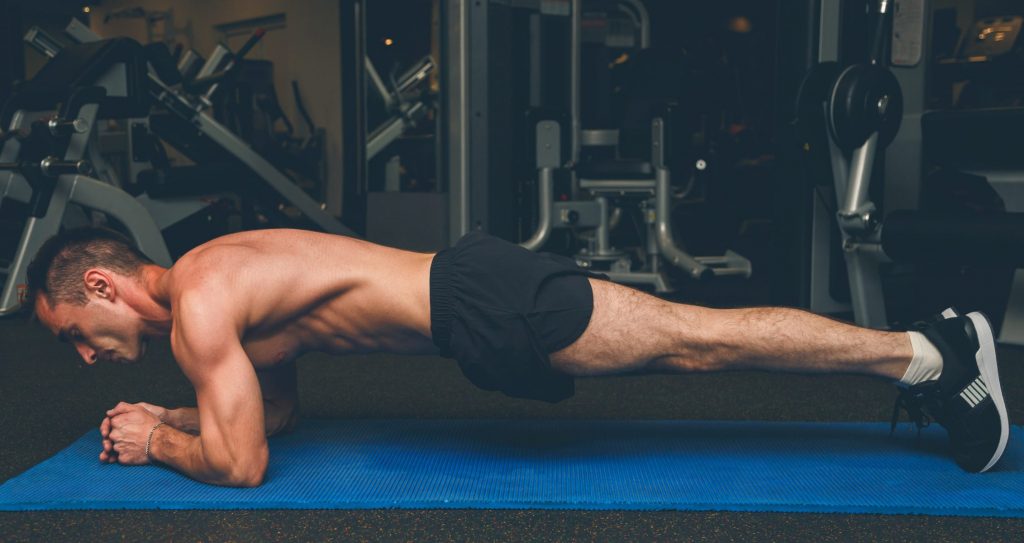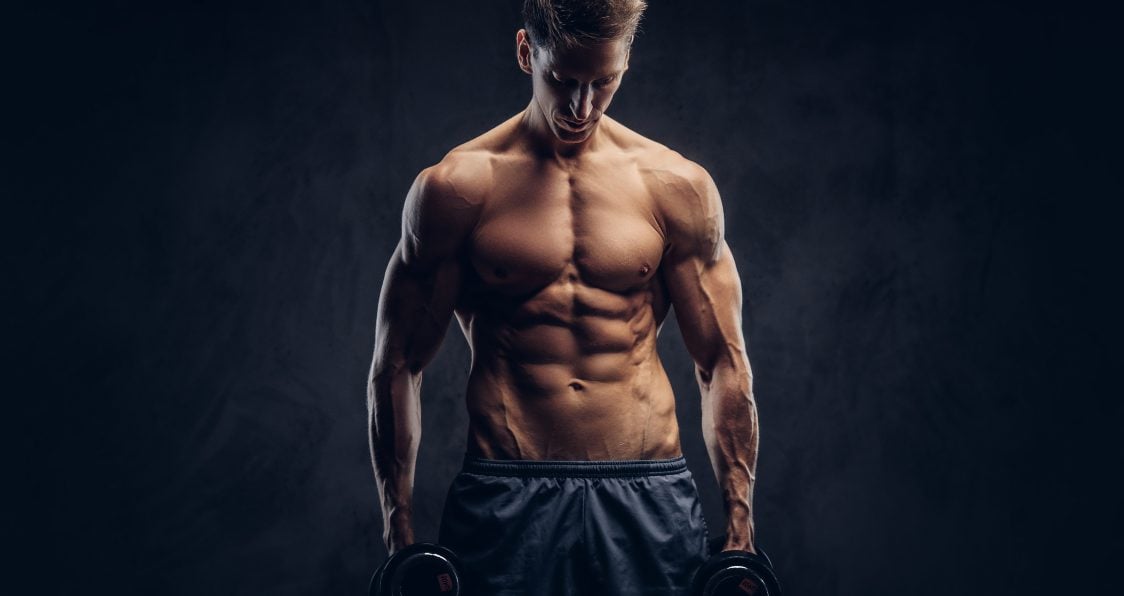They might be boring, but planks benefit your entire body as a single exercise to add with others, or for its own stand alone workout.
Planks are arguably one of the more boring and monotonous ab exercises you can do. To be stationary while suffering through the pain of a plank can be enough to scratch it from your daily exercise routine. But the benefits of planks to your core and the rest of your body should be the reason to incorporate them into your workouts. With practice, you will notice your ability to plank longer will increase and you will be able to push your body to more limits.
While some people may prefer a dynamic exercise because doing a plank seems too easy, think again. When done correctly, a plank can be a great exercise to work your core and benefit other parts of your body. Planks are called isometric exercises because you hold the position against gravity as opposed to contracting a muscle against resistance. This major multitasker of an exercise is important to tighten your core and back while also engaging your quads, pelvis, and glutes. With many variations, planks are an exercise that allow diversity in the workout to keep you from suffering from the boredom that can come with them each and every day.
Many people need to include planks in their workout regimen because they fail to compensate for missed core exercises which creates muscle imbalances. The front plank is the most common exercise, but variations of this include side planks, planks with oblique twists, walking planks, hip dips, and leg lifts. The benefits that planks provide are great ways to make up for any muscle imbalances and are sure to work your entire body with a good plank position from holding a plank every day to build those muscles with many reps.
Benefits of Planks
Core Strength For Increased Support & Six-Pack Abs
When people think of a plank, their mind jumps to that of a core exercise. Planks activate the core muscles better than other abs exercises (1) and are great for targeting the deep muscles in your abs. While the core provides a solid center and aids in many other exercises you do, working the entire core is vital to your overall strength and gains in the gym. Since we engage our core with everyday movements as well like turning, bending, or lifting, the overall benefit to your everyday health is undeniable. A strong core will also support the spine and can minimize the risk of back pain and holding a plank will help with the right plank exercises.
Total Body Strength For Full Engagement
During a plank, your lower body is fired up for your quads and glutes tighten in order to help engage the core. If the quads aren’t engaged fully, you will sink into the position and your form will start to slip. A solid lower body can keep pressure off of the low back and offer great support for a host of other exercises. Performing a plank on different surfaces will force your lower body to work hard, increasing your core engagement, and resulting in more strength (2). Your back benefits with planks for a solid core and engaged lower body allows your back to remain flat and those muscles and tendons around your spine are able to strengthen increasing back strength and spinal support.
Improved Posture For Balance & Injury Prevention
At first, a plank may put strain on your back since a straight back is required. After increased practice, your body will adjust to the plank posture and strengthen your back, thus increasing your overall posture. Good posture will improve your confidence and mood, aid in productivity, and support better breathing while preventing against injury and increase your range of motion (3). All of these will increase your performance in the gym and allow for a better, more effective workout with many reps.
Increased Balance For Stability & Strength
An increase in your balance will come as a result of increased core strength. While at first your balance may be off, as you continue your practice with planks you will notice a more stable position and better balance. Since planks promote a neutral spine, this will boost balance and ultimately posture. Your performance in the gym will increase and give you a grounded center to work from when performing other exercises. For solid form, keep your knee and elbow in a straight line to help support your forearm and hand which are directly tied to how strong your legs are in supporting yourself to improve that core strength.
Types Of Planks & Other Variations
Front Plank For Traditional Plank Exercise
The front plank is the standard plank exercise. It targets your main abdominal muscles, the Rectus Abdominis, but also the stabilizing muscles of your abs. It is important to keep solid posture in this position which incudes a tight core, braced quads and glutes, and a flat back in this forearm plank position.
How to: Begin on all fours. Slowly lower your upper body onto your elbows and straighten your legs so your toes are on the ground. You should be elevated as you rest on your elbows and toes and your body should be one straight line from your head to your feet. Hold for however long you would like in the plank position from a forearm plank and make sure to keep your core as stable as you can while holding a plank.
Side Plank For Oblique Strength & That V-Shape
The side plank is a great exercise to target the obliques which are often missed with other ab exercises. Strong obliques help with core stabilization and the side plank doesn’t put too much strain on your lower back and neck but still engages those core muscles with a great plank exercise and hold your feet in line with each leg for every minute which may bring your gains to an all time high. Make sure every move with your legs provides good feel for certain body parts, like your knees and butt to add to your physical health.
How to: Lie on one side with your legs extended and the top leg stacked on the lower one in a straight line to start a side plank. For example, brace your left side by resting on your left arm with your right hand in the air. You can be on your elbow or have your hand on the ground, but either way, they should be resting underneath your shoulder. Engage your core and lift your body so you create a straight line from your head to your feet with your right hand perpendicular to your body. Keep your core engaged to avoid any sagging or loose posture for maximum side plank effectiveness in the plank position, as well as alleviating back pain with a strong core. Hold this position to get started and have your feet stacked ready to go for however many reps.
Other Plank Variations To Try For Added Variety
- Forearm to Full Plank
- Walking Plank
- Reverse Plank
- Knee to Elbow Plank
- Plank with Row
- Plank Jacks
Check out our Plank Exercise Guide for further instruction.
Wrap TUp
Planks are an exercise that we typically shy away from. The monotony can be too much to bear and most of the time we want to keep the workout moving. The benefits of planks are too great to ignore and they should be a part of your workout routine. As a solid exercise to boost your core and overall body strength, as well as increase your balance and posture, the benefits reach far beyond the gym. But with a solid plank routine, your gains in the gym will improve and your performance goals will become easier to meet. Drop to the ground, set your timer, and start putting planks into your workout to maximize your total gains.
Let us know what you think in the comments below. Also, be sure to follow Generation Iron on Facebook, Twitter, and Instagram.
*Images courtesy of Envato
References
- Gottschall, Jinger S.; Mills, Jackie; Hastings, Bryce (2011). “Core Exercises That Incorporate Distal Trunk Muscles Maximize Primary Trunk Muscle Activation”. (source)
- Do, Yong-chan; Yoo, Won-gyu (2015). “Comparison of the thickness of the transversus abdominis and internal abdominal obliques during plank exercises on different support surfaces”. (sources)
- Harvard Healthbeat. “Why good posture matters”. (source)













